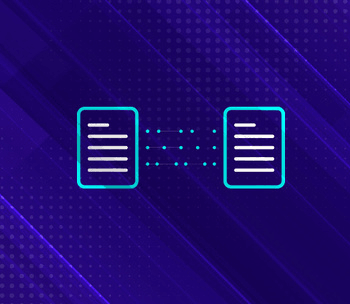Costing is frequently a central focus of inventory conversations with our clients and for good reason. While most companies select their costing method prior to implementing NetSuite, they frequently have questions about how costing is handled by the system. In this blog, I will provide a brief overview of the common costing methods available in NetSuite and how the system handles the intricacies each of them presents.
For illustrative purposes, I will use the below example of a company that received three shipments of Item A into their inventory and how they then fulfill a customer order for five units of the item using each of the common costing methods available in NetSuite.

1: LIFO (Last In, First Out)
This is the least common costing method, under which the most recently received items are the first ones to be distributed. This is a popular costing method for companies that have a constantly increasing cost for their goods. By fulfilling the most recently received items first, the total value of inventory in stock decreases which reduces the tax burden at the end of the year. International Financial Reporting Standards prohibit this costing method, but it is allowed under GAAP, so it is sometimes seen in the US.
In the example above, using LIFO, we fulfill the sales from Shipment #3. The cost of the sale is calculated at $55.
![]()
2: FIFO (First In, First Out)
FIFO is the opposite of LIFO. In this method, the first items received, become the first ones fulfilled. This is a common costing method in companies with inventory that is perishable such as food products. Using FIFO ensures that orders are fulfilled with the oldest inventory (items that would expire the soonest) before newer (fresher) inventory.
In the FIFO example above, the order would be fulfilled from Shipment #1 and the cost of the sale would be $45.
![]()
3: Average
This is the most common costing method used. The average purchase cost of all items in stock is used to calculate the cost of a sale. This allows the fulfillment of items from any lot or shipment to be used at any time, with no effect on the costing for a sale. This is the most flexible and universal costing method to use. By disregarding the purchase cost of individual shipments, companies are able to fulfill orders from a warehouse without tracking the movements of each unit of an item. As long as there are no perishability concerns, items can be fulfilled in any order and not affect the inventory costing.
NetSuite will show an “Average Cost” of inventory in stock regardless of which costing method is being used for an item. This allows forecasting, quoting, and purchasing to come up with an expected cost, since the system does not know which items will be consumed until the orders are fulfilled.
In our example above, the sale could be fulfilled from any of the shipments and the cost for the sale will be $50. The cost is calculated by summing and then averaging the value of all items in stock. For our example the company purchased 30 units that were received into inventory at three different times:
((10 Units * 9$)+(10 Units *10$)+(10 Units * 11$)) / 30 = 10$
In this example, the company sold the 5 units at a Cost of Goods Sold (COGS) of $50 (5 units * 10$ Average Cost = 50$).
Once each order is fulfilled, the Average Cost is re-calculated with the current stock. Every receipt of inventory for a Purchase Order and every inventory adjustment results in an Average Cost re-calculation as well.
4: Standard
The Standard Costing method allows companies to assign a cost to an item and then track all of the discrepancies to that cost in individual accounts. This is a very popular costing method in complex manufacturing businesses which have ever changing inventories and associated costs. NetSuite provides Variance Accounts for a number of different places where cost can fluctuate. By assigning a Standard, or Expected Cost, to an item, companies are able to then track the discrepancies in the Variance Accounts and re-value items accordingly.
The topic of Standard Costing is broad enough to warrant an entire blog onto itself. NetSuite provides the tools to track variances across purchasing, production, and unbuild processes. With all of these tools in place, there is a wealth of information available for companies to track their inventory costing. Of course this also brings an added level of complexity as well. While Standard Costing is certainly useful for some companies, there seems to be a trend of companies moving to the Standard Costing method based on their perception that it is superior or because it is finally available to them. Once they are in NetSuite and using Standard Costing, they quickly realize the complexity of this method may outweigh the benefits for them. It is key to have an implementation partner that understands the ins and outs of Standard Costing and is able to work with you to set it up properly.
In the example from above, if the Standard Cost on the item was set for $10, then -$1 would post to the Purchase Price Variance for Shipment #1 and $1 would post for Shipment #3. This would keep the cost at $10 for the price if revalued. Freight costs, labor costs, etc. can still have an impact on that value, but for now we will stay with the basics, so in our example the COGS would be $50 (5 units * $10 Standard Cost = $50).
5: Lot Numbered / Specific
While these are considered separate costing methods, I’ll combine them based on their similarities. On Lot or Specific items, NetSuite assigns an exact cost to each item sold. Since these items are tracked through the system from the time they are received on a Purchase Order to the time they are fulfilled, NetSuite is able to track their cost from start to finish. This allows for assembly items with serialized or lot numbered components to have exact pricing assigned to them when assembled.
With the 2016.1 release, NetSuite is introducing an enhancement to inventory costing calculations for serial and lot numbered items that are configured to use Standard costing. Since the cost of these types of items is always fixed and the cost for the individual serial or lot number is irrelevant, the application will no longer use specific costing for serial and lot numbered items that are configured to use the Standard costing method. Companies that have items configured this way will gain improved system performance as result of no longer needing to run unnecessary inventory costing logic.
These are the most common costing methods used in NetSuite. Each one brings different complexities to the implementation process. A trusted partner can help ensure that your items, costing methods and overall system are configured effectively from the start. At Techfino, we take the time to get to know your processes and objectives, provide advice and implementation support to ensure you are set up for success with your NetSuite system!
Get Started Now
The easiest way to get started is to contact Techfino today. If you’d like a little more information first, you can download our ContinuedSuccess Whitepaper. Either way, we hope you’ve found this guide helpful and hope that we can further assist you on your path to leveling up your NetSuite Support.

.jpg)


